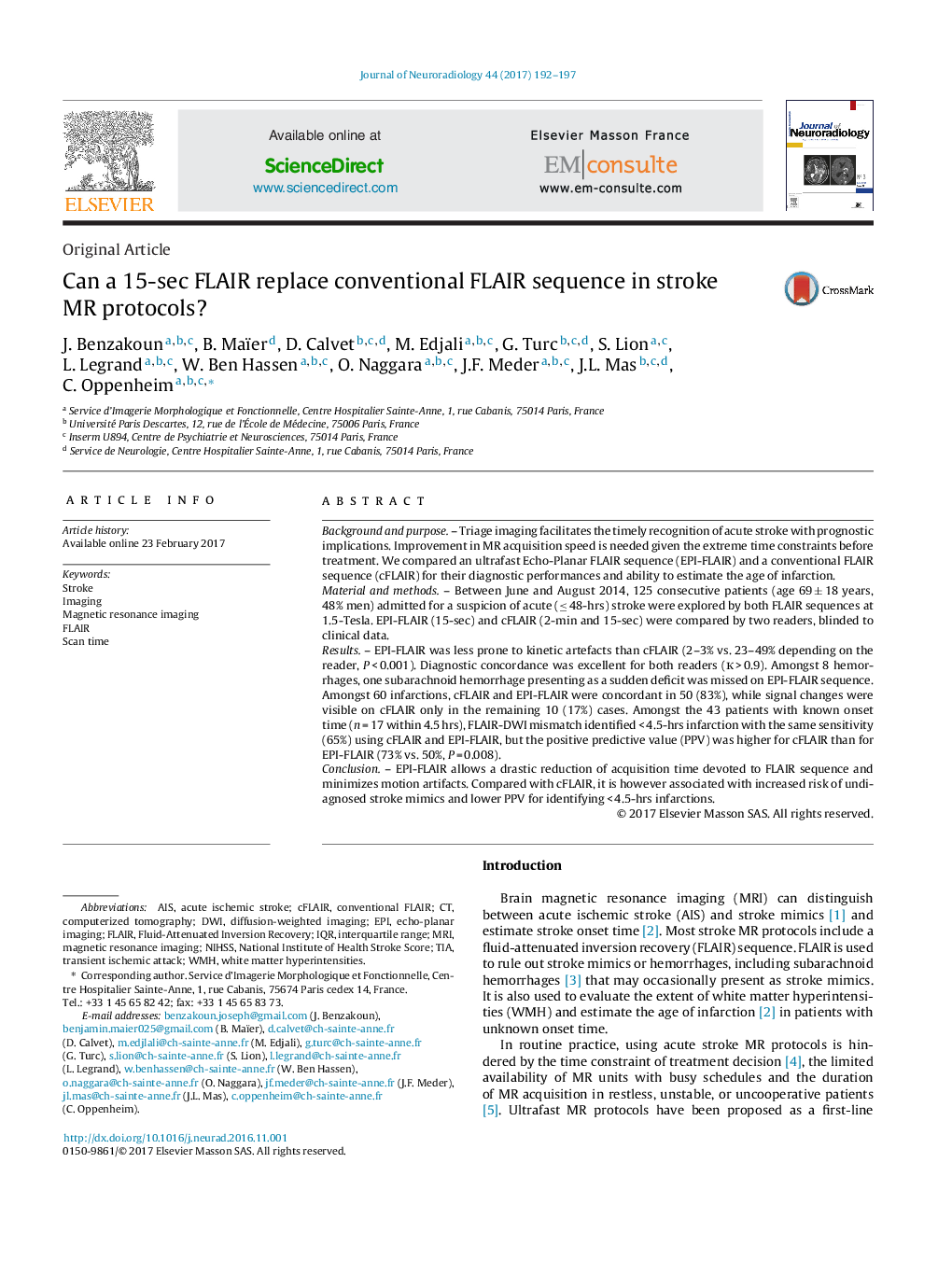| Article ID | Journal | Published Year | Pages | File Type |
|---|---|---|---|---|
| 5726978 | Journal of Neuroradiology | 2017 | 6 Pages |
Background and purposeTriage imaging facilitates the timely recognition of acute stroke with prognostic implications. Improvement in MR acquisition speed is needed given the extreme time constraints before treatment. We compared an ultrafast Echo-Planar FLAIR sequence (EPI-FLAIR) and a conventional FLAIR sequence (cFLAIR) for their diagnostic performances and ability to estimate the age of infarction.Material and methodsBetween June and August 2014, 125 consecutive patients (age 69 ± 18 years, 48% men) admitted for a suspicion of acute (â¤Â 48-hrs) stroke were explored by both FLAIR sequences at 1.5-Tesla. EPI-FLAIR (15-sec) and cFLAIR (2-min and 15-sec) were compared by two readers, blinded to clinical data.ResultsEPI-FLAIR was less prone to kinetic artefacts than cFLAIR (2-3% vs. 23-49% depending on the reader, P < 0.001). Diagnostic concordance was excellent for both readers (к > 0.9). Amongst 8 hemorrhages, one subarachnoid hemorrhage presenting as a sudden deficit was missed on EPI-FLAIR sequence. Amongst 60 infarctions, cFLAIR and EPI-FLAIR were concordant in 50 (83%), while signal changes were visible on cFLAIR only in the remaining 10 (17%) cases. Amongst the 43 patients with known onset time (n = 17 within 4.5 hrs), FLAIR-DWI mismatch identified < 4.5-hrs infarction with the same sensitivity (65%) using cFLAIR and EPI-FLAIR, but the positive predictive value (PPV) was higher for cFLAIR than for EPI-FLAIR (73% vs. 50%, P = 0.008).ConclusionEPI-FLAIR allows a drastic reduction of acquisition time devoted to FLAIR sequence and minimizes motion artifacts. Compared with cFLAIR, it is however associated with increased risk of undiagnosed stroke mimics and lower PPV for identifying < 4.5-hrs infarctions.
